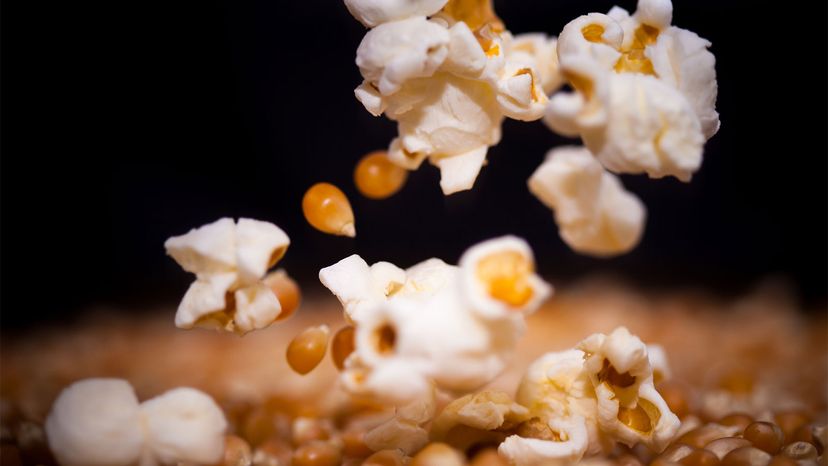 “Are fears of microwave popcorn just hot air? Loren Zemlicka/Getty Images
“Are fears of microwave popcorn just hot air? Loren Zemlicka/Getty Images
There’s been a lot of hype in recent years about the potential dangers of microwave popcorn, but is this caution founded, or just overblown fear-mongering? The short answer is many of the chemicals that caused concern in earlier decades have been removed from microwave popcorn, but some critics still are not satisfied.
"You may consider popcorn to be a low-calorie, high-fiber snack, but microwave popcorn isn’t a healthy choice," explains nutrition expert and "Beating Sugar Addiction for Dummies" author Dan DeFigio in an email interview. That’s because microwave popcorn bags were coated with perfluorinated chemicals (PFCs) to prevent grease from leaking out. One particular type of PFC, known as C8 compounds or perfluorooctanoic acid (PFOA), has been linked to certain cancers, but the American Cancer Society says the evidence is inconclusive and more research is being done about this.
Nevertheless, in response to concerns about PFCs, the U.S. Food and Drug Administration (FDA) worked with popcorn manufacturers back in 2011 to remove PFOA from their packaging. Three more PFCs were subsequently banned five years later. So today’s microwave popcorn doesn’t have these chemicals, but critics say that the replacement agents could be just as problematic as the old ones, but less is known about them.
That’s not the only problem, however. The chemical that for decades lent buttery deliciousness to popcorn has also been connected in rare cases with major lung damage. Known as diacetyl, it’s long been a documented problem with workers in popcorn manufacturing facilities, but also can be treacherous for people who just eat the snack a lot. In fact, a 2013 study published in the International Journal of Occupational and Environmental Health compared three cases where consumers had similar exposure levels to manufacturing workers. A 2007 study published in the journal Critical Reviews in Food Science and Nutrition found that more than 80 percent of chemical emissions happened when the bag is opened post-popping. Although diacetyl has been removed from most products, some critics claim that the replacement chemical for diacetyl is also harmful.
Making Safer Popcorn
Most of the exposure to diacetyl came from inhaling rather than eating popcorn. Therefore, experts recommend at least waiting for the bag to cool before you open it to minimize potentially harmful chemical exposure. Also, read the microwave popcorn labels before buying. In addition to a low chemical count, you also want a product low in saturated fat and sodium and free of artificial flavors and colors.
Better yet, make your own fresh at home! "Pop your own non-GMO corn at home with an air popper," says DiFigio. "If you like to flavor it, add organic butter and sea salt, or sprinkle some (real) cheese."
Now That’s Scary
About 98 percent of Americans have PFCs in their blood, not surprising considering that the chemical has been used as a grease-resisting agent in everything from sandwich bags to pizza boxes to Teflon pans.


